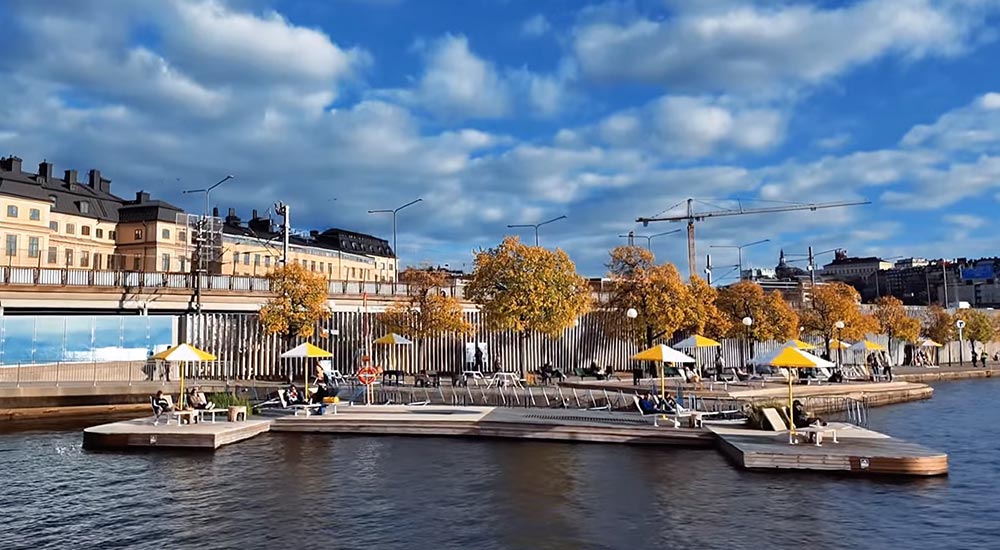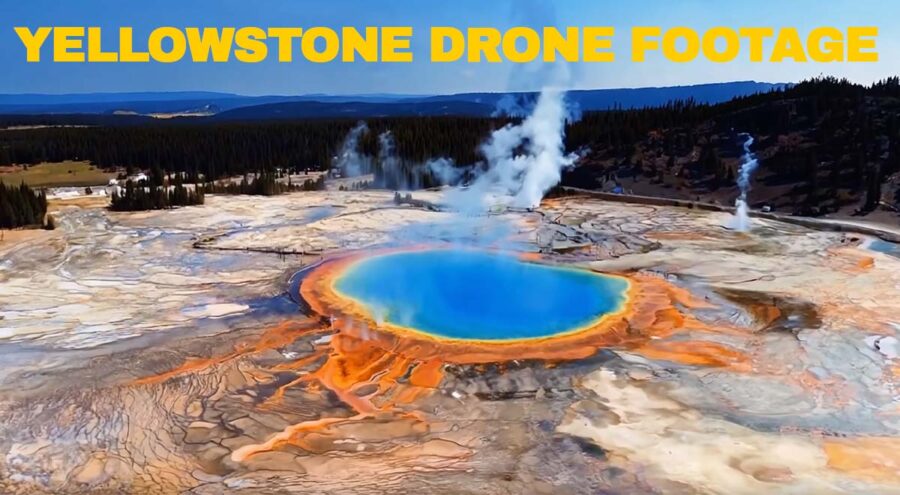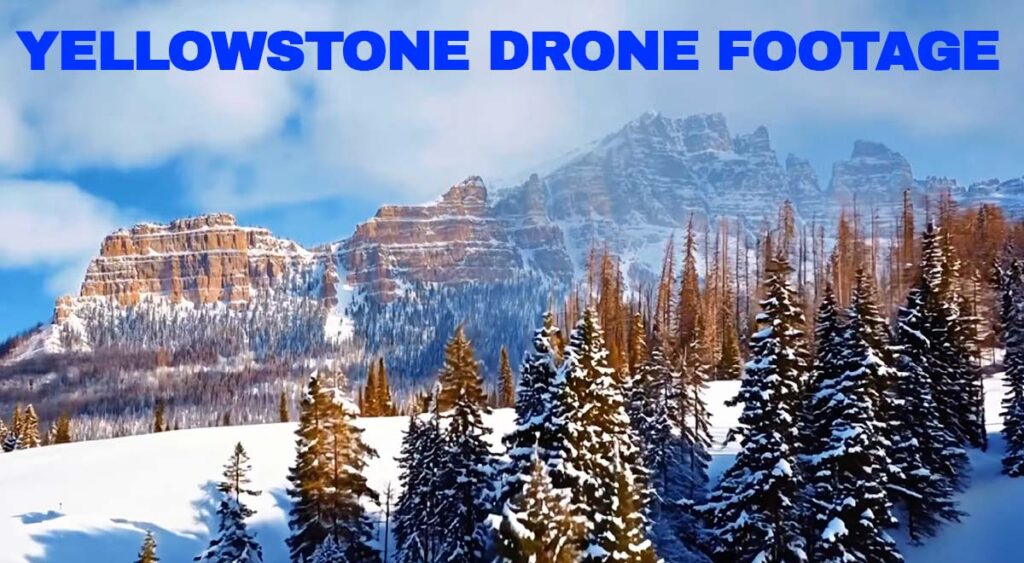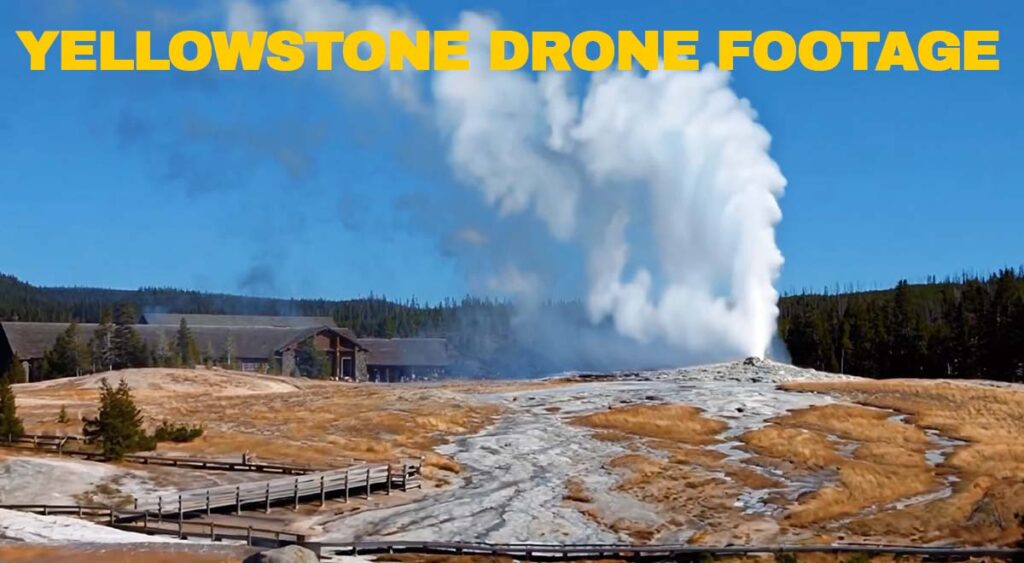Amsterdam Best Views 2024 with Epic Drone Footage
In a world where the hustle never seems to stop, the need for moments of relaxation and awe is more pronounced than ever. Drone footage showcasing Amsterdam’s stunning vistas offers just that, capturing unparalleled perspectives of the city’s iconic architecture and vibrant street life. This video combines the visual beauty of the city with soothing music, creating an immersive experience that both relaxes the mind and quenches a thirst for adventure.
Exploring Amsterdam through this aerial footage provides viewers with breathtaking scenes they might otherwise miss. From the intricately designed canals to the historical landmarks, each frame reveals a different facet of the city’s charm. This portrayal of Amsterdam not only highlights its picturesque beauty but also invites viewers into a serene exploration of its urban landscape.
Such a visual journey through Amsterdam encourages a deeper appreciation for the city’s unique blend of historical and modern elements. The tranquility provided by the accompanying music enhances the sensory experience, making it a perfect escape from daily stresses. As the drone glides over Amsterdam’s various attractions, viewers are given a new perspective on familiar sights, making it an enticing audiovisual treat.
Discovering Amsterdam’s Beauty
Amsterdam’s allure lies in its scenic landscapes and historical richness. These elements provide a unique perspective and enrich any visual journey through the city.
Amsterdam’s Unique Landscape
Amsterdam stands out with its extensive canal network, renowned for both beauty and engineering brilliance. These canals, originally intended for transport and water management, now offer picturesque views interwoven with historical buildings.
Iconic landmarks such as the Anne Frank House and the Rijksmuseum are often visible from these waters, enhancing the aesthetics of the cityscape. The architectural contrast of modern structures with 17th-century gabled facades creates a visually stimulating blend. From high above, captured in drone footage, the layout of the city with its radial pattern is evident. This view is especially stunning during the tulip season when bursts of color spread across the city.
Historical Significance of the Views
The architectural heritage of Amsterdam plays a pivotal role in its beauty. Buildings lining the canals, many of which date back to the Dutch Golden Age, tell stories of a rich and prosperous past.
Each narrow house and arched bridge reflects a part of Amsterdam’s history as a thriving port city. Notable historic sites include the grand Royal Palace and the Westerkerk, showcasing the city’s evolution through various architectural periods. They represent cultural and social shifts over centuries. Windmills on the outskirts, remnants of industrial history, blend past with the present. These structures, preserved and cherished, form a critical part of Amsterdam’s visual narrative.
Epic Drone Footage Showcased
The Amsterdam best views 2024 video captures breathtaking aerial perspectives, unveiling the city’s charm from above. This section uncovers the technology behind the stunning visuals, highlights key locations, and provides insights into the filming process.
Drone Technology and Techniques
Advanced drones equipped with high-resolution cameras capture Amsterdam’s iconic landscapes. The use of GPS stabilization ensures smooth, steady shots, vital for capturing the intricate details of historic architecture.
Drones often feature automated flight paths, allowing pilots to focus on framing. Techniques include long, sweeping panoramic shots or precise, steady close-ups. These techniques provide both broad views of the city and intimate glimpses of its vibrant neighborhoods.
The integration of AI enhances the flight experience. Some drones offer obstacle avoidance, reducing the risk of incidents during challenging maneuvers around tight spaces or crowded areas.
Highlights of the Drone Journey
Amsterdam’s historic canals take center stage, appearing like veins across the city’s landscape. The drone glides over famous sites like the Rijksmuseum and Anne Frank House, offering unique perspectives not seen from ground level.
Colorful tulip fields surrounding the city are showcased, adding vibrant splashes amid historic cityscapes. The drone captures the contrast between the modernity of the RAI Amsterdam convention center and the classical charm of Dam Square.
Footage also includes lesser-known areas, bringing attention to the tranquil beauty of parks and local neighborhoods. These glimpses offer viewers a glimpse into the everyday life and serenity found beyond tourist hotspots.
Understanding the Filming Process
Preparation is key, beginning with weather checks to ensure optimal flying conditions. Wind, rain, or cloud cover can impact footage and safety. Clear days provide the best light and visibility for vibrant shots.
Permissions may be required, especially over populated or historic sites, ensuring the filming adheres to local regulations and respects privacy. Drone operators communicate with relevant authorities before each flight.
Careful post-production enhances the footage quality. Color grading adjusts lighting and shadows for consistency, and editing software is used to stitch together various clips, ensuring a seamless viewing experience that engages and mesmerizes audiences.
Relaxing Music Blended with Visuals
The combination of relaxing music with stunning visuals can provide an immersive experience that enhances the viewer’s engagement. Thoughtful music selection and precise synchronization with drone footage can elevate the mood and impact.
Selection of Music for Atmosphere
Choosing the right music is crucial in creating the intended atmosphere. The gentle, calming nature of the music works in harmony with the serene aerial shots of Amsterdam cityscapes.
Instrumental tracks often suit these visuals as they lack distracting lyrics, allowing viewers to focus more on the imagery. Genres such as ambient, classical, or slow-tempo electronic music are popular choices for their ability to evoke a sense of peace and exploration. The tone and tempo of the music should align with the visual scenes to maintain coherence and flow.
Synchronization of Music and Footage
Synchronization involves skillfully matching the music with the video to enhance storytelling. Timing the peaks and troughs of the music with critical moments in the footage, such as panoramic views or movements, adds depth to the viewer’s experience. For instance, a gradual crescendo can mirror an ascending drone shot, creating anticipation.
Effective synchronization ensures the music complements rather than overwhelms the visuals. Attention to transitions between scenes is vital; sudden changes can disrupt the experience. Editors may use software tools to finely adjust the timing of each musical element, ensuring a seamless integration that heightens visual impact and emotional connection.
Must-See Locations in 2024 Amsterdam
Amsterdam offers a mix of vibrant contemporary attractions and breathtaking timeless views. Visitors in 2024 can explore the city’s blend of modernity and tradition through various iconic locations, each providing a unique perspective on Amsterdam’s charm.
Contemporary Hotspots
Modern attractions include the Eye Filmmuseum, known for its unique angular architecture and captivating exhibitions. Its location on the IJ River offers striking views of the cityscape.
The NDSM Wharf has transformed from an industrial shipyard into a creative hub bustling with street art and cultural events. It hosts art installations, workshops, and festivals.
For those fascinated by innovation, the A’DAM Tower features an observation deck with a panoramic view of the city. Visitors can enjoy a unique swing experience that extends over the edge of the building, offering an exhilarating look over the urban landscape below.
Timeless Amsterdam Views
For more traditional views, the canals of Amsterdam remain a hallmark of the city. Boat tours along the UNESCO-listed canals provide an intimate glimpse into Amsterdam’s historical architecture.
The Van Gogh Museum, holding the largest collection of Van Gogh’s paintings, is a must-visit for art enthusiasts. Its exhibitions convey the depth of Dutch culture and history.
Another iconic site is the Anne Frank House, offering profound insights into history through its meticulously preserved exhibits. The Jordaan neighborhood, with its narrow streets, quaint shops, and cafes, evokes a sense of the city’s enduring charm and spirit.
These cherished locations uphold Amsterdam’s reputation as a city where history meets modern vibrancy, catering to diverse interests and tastes.
Optimizing the Viewing Experience
To enjoy the “Amsterdam Best Views 2024” video with its stunning EPIC Drone Footage, viewers should first ensure they have a reliable internet connection. This prevents any buffering issues that can disrupt the immersive experience.
For optimal picture quality, it’s advisable to select the highest available resolution when playing the video. Most modern devices and internet connections can handle 1080p HD or even 4K. Adjusting this setting enhances visual clarity, bringing life’s vibrant details to screens.
Using high-quality headphones or speakers amplifies the relaxing music accompanying the footage. This enriches the overall experience, making it more engaging and relaxing.
Consider watching in a dimly lit room to minimize glare on the screen. This environment helps maintain focus on the video without external distractions, enhancing both visual and auditory experiences.
Enabling fullscreen mode can also improve the viewing experience. By expanding the video to fill the entire display, viewers can fully appreciate the sweeping views of Amsterdam without any obtrusive elements like browser tabs or controls.
Lastly, if available, utilizing devices with larger displays such as tablets or smart TVs, ensures a more immersive experience. These devices provide a better view of the intricate details captured by the drone footage, offering a glimpse of Amsterdam’s best perspectives in 2024.
Behind the Scenes
Capturing the breathtaking views of Amsterdam using drone technology demands meticulous planning and execution. The team involved spent weeks scouting the best locations to ensure a comprehensive visual narrative. Busy areas were recorded at quieter times to achieve serene footage, crucial when set to relaxing music.
Equipment played a key role. State-of-the-art drones with high-definition cameras were employed. These provided stable, sharp images while flying in potentially challenging weather conditions typical of Amsterdam.
Safety was a primary concern throughout the project. Pilots ensured compliance with local regulations, coordinating with authorities to operate drones legally and safely. This involved obtaining necessary permits and adhering to no-fly zones.
In post-production, video specialists meticulously edited hours of footage. They synchronized shots with calming background music, enhancing the serene experience intended for the viewers. The choice of music aligns with the growing trend of combining visuals with relaxation audio as seen in sources like Meditation Relax Music channels.
They focused on showcasing iconic landmarks as well as hidden gems around the city. The footage ranges from the famous canals to less frequented alleyways, offering viewers a unique perspective of Amsterdam.
The final editing process also involved color grading to enhance the natural beauty of the cityscape. This step was integral in highlighting the vibrant atmosphere of Amsterdam through different times of the day and in varying light conditions.
Safety Measures and Regulations for Drone Filming
Drone filming offers stunning aerial views, but operators must adhere to strict safety measures and regulations. In the Netherlands, including Amsterdam, the Dutch Civil Aviation Authority governs drone activities.
Drone pilots are required to register drones over a certain weight with the aviation authority. This ensures that operators are aware of safety protocols and legal requirements.
Key Regulations:
- Altitude Limits: Drones must not fly above 120 meters (approximately 394 feet).
- No-Fly Zones: Areas near airports and certain urban locations are restricted for safety.
When filming in scenic locations like Amsterdam, privacy remains a key concern. Pilots must avoid capturing footage of people without consent, adhering to privacy legislation.
Insurance is often mandatory for commercial drone operations. This covers potential damages and liabilities, protecting both the operator and the public.
Pre-Flight Checklist:
- Ensure the drone is in optimal condition.
- Confirm weather conditions are suitable for flying.
- Check that all equipment, including cameras and GPS, is functioning correctly.
Using drones responsively enhances both the quality of footage and safety for the public.
Conclusion
The YouTube video “Amsterdam best views 2024 | EPIC Drone Footage | Relaxing Music” offers an immersive experience for viewers interested in the city’s visuals and calming sounds. The footage highlights Amsterdam’s scenic landscapes, making use of high-quality drone technology.
Key Highlights:
- The video showcases iconic sights, capturing both urban vistas and serene natural settings.
- A blend of relaxing music complements the visual experience, enhancing the viewer’s engagement.
The production quality ensures that each scene is vivid, benefiting those who seek travel inspiration or relaxation. Drone shots present a unique perspective on Amsterdam’s architecture and waterways.
Incorporating elements such as pacing and transitions, the creators maintain viewer interest throughout. This strategic use of music and visuals reflects a thoughtful approach to video creation.
By seamlessly integrating high-definition visuals with calming audioscapes, it caters to a diverse audience seeking entertainment and relaxation.









